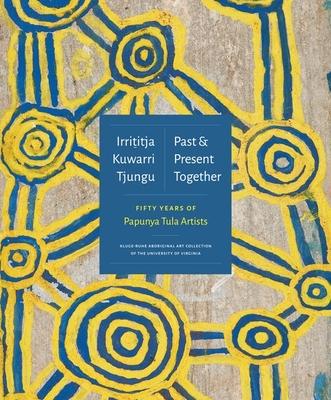In 1971 a small group of Aboriginal artists from Australia's remote Central and Western Deserts changed the face of global art history. The township of Papunya was founded in 1959 as a settlement for Aboriginal people who were relocated from their homelands. Living in cramped conditions, the community brought together people of diverse backgrounds and languages. Painting offered a way of asserting authority: of explaining who the townspeople were and where they came from amid this chaotic mlange of strangers. Using ancient iconographies rarely seen by outsiders, an artistic renaissance sprang forth as artists defiantly asserted themselves against the uncertainty of colonial displacement.
Irrititja Kuwarri Tjungu (Past and Present Together) celebrates the fiftieth anniversary of Papunya Tula Artists, from the very first experiments on scraps of cardboard, linoleum, and Masonite through to the epic abstract paintings that are showcased internationally today. Motivated by the artists' desire to preserve and transmit their cultural knowledge, the movement quickly grew into a powerful medium for economic and social justice. From humble beginnings, a multimillion-dollar industry would emerge, changing the face of contemporary art and creating a powerful voice for Indigenous artists.
Contributors: John Kean, Steve Martin, Fred Myers, Elizabeth Marks Nakamarra, Narlie Nelson Nakamarra, Eileen Napaltjarri, Charlotte Phillipus Napurrula, Jodie Napurrula, Punata Stockman Nungurrayi, Rachel Paltridge, Hetti Perkins, Cara Pinchbeck, Henry Skerritt, Margo Smith, Marina Strocchi, Paul Sweeney, Morris Jackson Tjampitjinpa, Joseph Jurra Tjapaltjarri, Bobby West Tjupurrula
Distributed for the Kluge-Ruhe Aboriginal Art Collection of the University of Virginia
